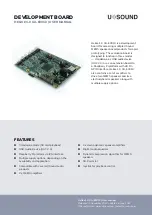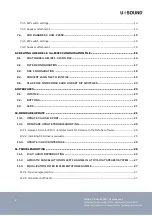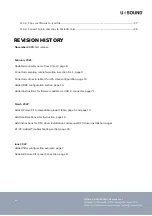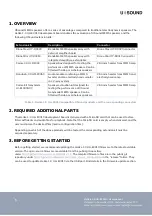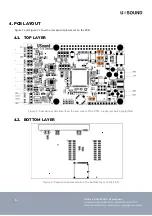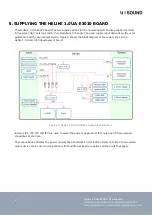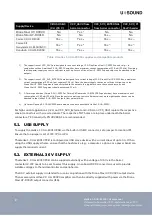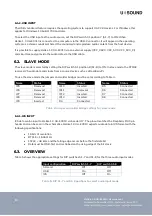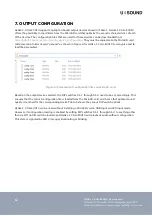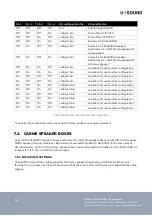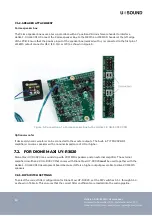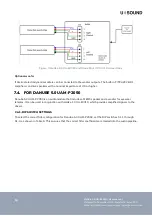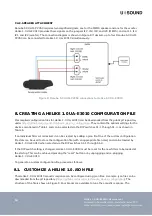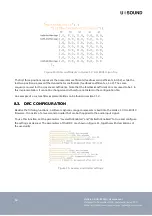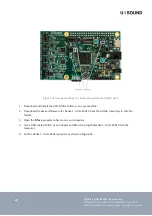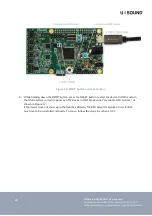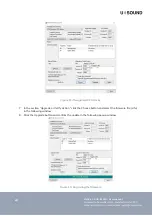
9
Helike 1.0 UA-E3010 | User manual
Released in November 2020, updated in June 2022
USound GmbH | www.usound.com | [email protected]
5.3.
EXTERNAL 5 V
The 5 V external supply is selected by setting jumper JP3. The voltage source needs to be connected to the
P1J barrel connector (J4). Using this supply is mandatory when Dione Mini UY-R3010 is used as an output
device.
5.4.
5 V SUPPLY FROM EXPANSION HEADER
5 V can be supplied from the RaspberryPi expansion header (J17 Pin 2 and 4). This is achieved by setting
jumper JP4. A minimum current of 500 mA is required.
6.
AUDIO INPUT CONFIGURATION
The Helike 1.0 UA-E3010 evaluation board has two input configuration options:
In
standalone mode,
the I2S clocks are generated by the STM32 microcontroller and audio signals can be
input via the USB-C connector (USB soundcard) or by reading audio files from a MicroSD card.
In
slave mode
, the input comes from a Raspberry Pi or another I2S source and is forwarded by the STM32
microcontroller to the DAC converters.
6.1.
STANDALONE MODE
The standalone mode is selected by setting the DIP switch S1 position 8 (S1-8) to OFF. In standalone
mode, the STM32 is the master on all I2S clocks, and the MicroSD card, or the USB input can be selected as
audio sources.
To use the standalone mode the jumpers and solder bridges must be set according to Table 3.
Name
Status
Name
Status
Name
Status
JP5
Removed
JP10
Removed
R5
Irrelevant
JP6
Removed
JP11
Inserted
R6
Irrelevant
JP7
Removed
JP12
Removed
R7
Irrelevant
JP8
Removed
JP13
Removed
R8
Irrelevant
JP9
Removed
R4
Irrelevant
Table 3: Jumper and solder bridge settings for standalone mode
6.1.1.
SD CARD INPUT
To select the MicroSD card as the audio source, set the DIP switch S1 position 7 (S1-7) to OFF. MP3 and
WAV files stored in the root directory on the MicroSD card will be played back automatically. The playback
of the files (play, pause, next track) can be controlled with the joystick as described in section 9.1. Note that
the sampling rate of the audio files must be 48 kHz.

